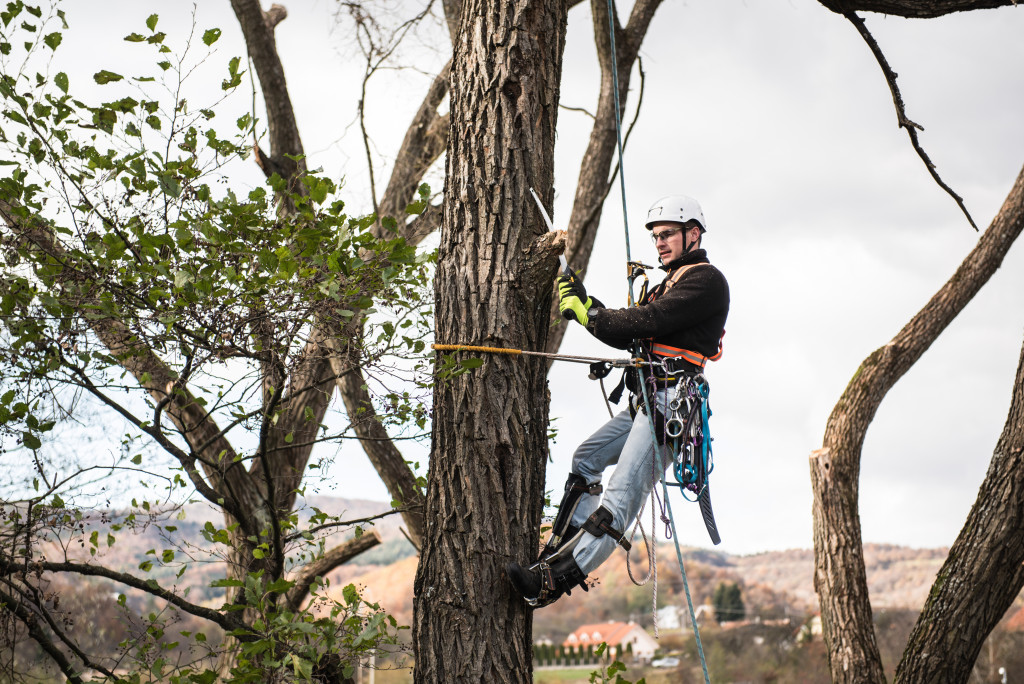A veteran tree is a tree that is at least 50 years old. Trees can live to be several hundred years old in the wild, but in an urban environment, trees face many stressors that can shorten their lifespan.
Despite this, veteran trees are an important part of the urban forest and provide many benefits to people and wildlife. If you have a veteran tree on your property, there are some things you can do to help it stay healthy and long-lived.
Watering Veteran Trees
Veteran trees need deep watering about once a week during the growing season. The optimal time to water is in the morning before the blazing sun dries out the soil. This enables the water to flow into the roots, where it can do best. To check if your tree needs water, stick your finger into the soil about 2-3 inches (-7.62 cm) deep. If it feels dry, it needs water. If it feels moist, it doesn’t need any more water.
It’s important not to overwater your trees as this can encourage fungal growth and make them more susceptible to pests and diseases. During prolonged periods of drought, you may need to water more frequently to keep your trees healthy.
Halo Clearance for Veteran Trees
One of the most important things you can do for your veteran trees is to ensure they have enough space around them. This is called “halo clearance,” and it’s important because it allows the tree to take in sunlight, air, and water. It also helps to prevent damage from lawnmowers, string trimmers, and other garden tools. The halo clearance for a veteran tree should be at least 2 feet (0.61 m), but it can be more depending on the size of the tree.
Halo clearance can be a difficult task. Therefore, it is best left to a professional tree surgeon who has the knowledge and experience to do it properly. They can ensure that the halo clearance is done in a way that won’t damage the tree or its roots. Moreover, they will also be able to advise you on the best way to care for your veteran tree.
Fertilizing Veteran Trees
Veteran trees don’t need as much fertilizer as younger trees because they are established, and their root systems are already enormous. Fertilizing too much can harm veteran trees by encouraging excessive growth, making them susceptible to wind damage and other problems.
If you fertilize your veteran trees, use a slow-release fertilizer and apply it according to the manufacturer’s instructions. Some of the best fertilizers for trees are compost and other organic matter. You can apply these around the base of the tree, or you can use them as mulch.
Pruning Veteran Trees
Pruning veteran trees is different from pruning young trees. When pruning veteran trees, you should always ensure that cuts are made just above a branch collar (the thickened area where a branch attaches to the trunk).
Cuts outside the branch collar of the tree can damage it and leave it vulnerable to disease and rot. It’s also important not to remove too much foliage from a veteran tree as this can weaken it.

Caring for the Land Around Veteran Trees
The land around a veteran tree is just as important as the tree itself. The roots of a veteran tree can extend far beyond the drip line (the edge of the tree’s canopy), so it’s important not to compact the soil around the tree or build anything on top of the roots. This can damage the roots and make it difficult for the tree to take up water and nutrients.
For instance, don’t park cars on the grass around the base of a veteran tree, and be careful not to drive over roots exposed on the ground surface. This will damage the roots and can make the tree unstable.
Mulching Veteran Trees
Mulching is one of the best things you can do for your veteran trees. Mulch helps to protect the roots, keeps the soil moist, and prevents weeds from growing. Use a layer of mulch 2-4 inches (-10.16 cm) deep, and keep it away from the tree’s trunk. An easy way to do this is to create a “mulch ring” around the tree. As the mulch decomposes, it will add nutrients to the soil, benefiting your tree.
Taking care of veteran trees is essential for the health of the urban forest and the people and wildlife that depend on it. By following these simple tips, you can ensure your veteran trees are healthy and thrive for many years. If you are unsure about how to care for your veteran trees, or if you think they are unhealthy, don’t hesitate to contact a professional.
